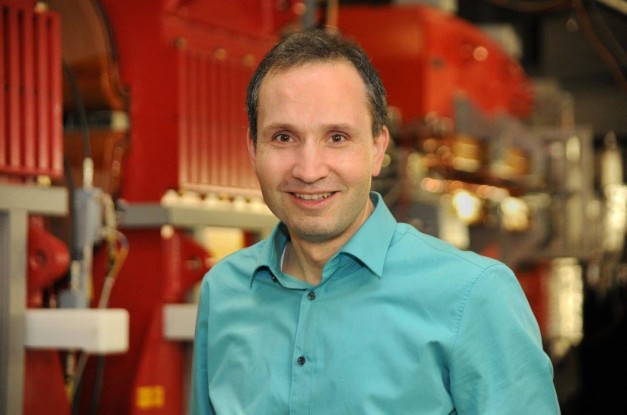Collinear apparatus for laser spectroscopy and applied science
The COALA apparatus (Fig. 1) has been designed and already successfully tested for accurate laser-based high voltage measurements. Meanwhile, the facility was expanded considerably and allows the possibility to measure very precisely absolute frequencies, isotope shifts, and hyper fine structures of stable isotopes. This serves to test atomic physics theories, the determination of charge radii of atomic nuclei, and the preparation of experiments with short-lived isotopes (on-line) at accelerator facilities.
Current Projects at COALA:
- High-Voltage Measurements
- Precision Measurements on Singly Charged Ions
By quasi-simultaneous measurement with two lasers, one superposed with the ion beam in collinear and one in anticollinear direction (see Fig. 2), the voltage dependency in the relation between transition frequency f0 and laser frequency
fLcoll = f0 (1 – β) γ,
fLanticoll = f0 (1 + β) γ respectively, with γ=1/(1 – β2)1/2
resulting from excitation with a single laser can be eliminated and the square of the absolute frequency results from the product of both laser frequencies:
fLcoll fLanticoll= f02(1- β2)/(1- β2)= f02.
Combined with a highly precise measurement of the laser frequencies with an optical frequency comb the most precise measurement of the absolute transition frequency of the D1-line of the stable isotope 138Ba was recently performed within a campaign to measure the isotope shifts of stable barium isotopes [1]. The goal of these measurements was to study the ratio of the field shift coefficients in the isotope shift, because in the stable calcium isotopes a discrepancy between theoretical predictions and experiment was recently found [2].
Meanwhile, those discrepancies could finally be completely eliminated by new high-precision measurements of all stable calcium isotopes at the KOALA setup [3]. We are currently preparing similar measurements on strontium ions.
[1] P. Imgram et al., Phys. Rev. A 99, 012511 (2019)
[2] C. Shi et al., Applied Physics B 123, 2 (2016)
[3] P. Müller et al., Phys. Rev. Research 2, 043351 (2020)








